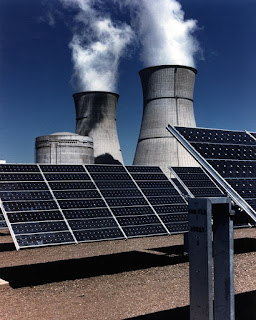Take a second and think back to the last time you bought
something that was on sale. How great did it feel? It’s easy to recognize and
appreciate deals when you get a better price for something you were going to
buy anyway. But how do you feel when the tables are turned, and you’re charged
extra to buy something?
For example, when you go to the gas station to fill up your
SUV, do you pay with cash or credit? At most stations, the price that you pay
per gallon when using cash is different than the price per gallon for using
credit. Either way, you’re getting the exact same gasoline, so how do you
perceive this difference in price? If you see it as a mark-up or extra fee for
using credit, you’re probably not a huge fan of the price differential. On the
other hand, if you see it as a discount for using cash, you may view it
favorably, and would be unlikely to want to see the discount removed.
 |
When you purchase something, you often weigh
the cost and benefits of using cash vs. credit
(Photo credit: 401kcalculator.org)
|
It is with this in mind that this
article from The Telegraph,
across the pond in the UK, caught my eye. The article was written by The Telegraph’s Consumer Affairs Editor,
who chalks up a new law banning charging many credit card fees as a clear
victory for consumers. If the title of the article, “[e]nd to rip-off credit
card fees…” doesn’t make this position clear, the description of these “rip off”
fees as being “used by shops, restaurants and travel firms to make extra profit
at the direct expense of customers choosing to pay by card” should remove all
doubt. But is the removal of these fees truly a clear “win” for consumers, at
the expense of the greedy shops, restaurants, and travel firms?
Let’s begin by considering a portion of the quote above.
These fees are charged to customers who are “choosing to pay by card.” This
implies that the customers have other options (usually cash), but find paying
by card to be preferable for some reason. Presumably, either they find using
credit more convenient, or they may receive some cash back or points for using
their credit cards. No matter the reason, some citizens chose to pay in credit
despite the fee, and others chose to avoid the fee by paying in cash.
Essentially, you’re free to sort into the group (cash or credit) that you feel
is the best deal for you, after taking the fees into account.
Now what happens if you ban the ability to charge credit
card transaction fees? If you’re a consumer, perhaps you’re hoping that the
cash price will stay the same, and the credit price will be lowered to match
it. Those who previously paid in credit would now be better off, since they
still get the perks (convenience, points, etc…) of using credit, but for a
lower price. If this scenario were to play out, even those previously using
cash would be as well off, if not better off. Some of them may even choose to
switch over and begin using credit cards for their purchases! Consumers would
clearly be better off, and the costs would fall on either credit card companies
or those greedy shops, restaurants and travel firms. The problem is, this
scenario has some assumptions that aren’t likely to play out in the real world.
 |
How do you view the price difference in
paying for gas with cash vs. credit?
(Photo credit: 127driver via Wikimedia Commons)
|
The issue with the scenario above is that it assumes the
cash price will stay constant. It’s like assuming that if gasoline is currently
$2.00/gallon when using cash, and $2.10/gal when using credit, that all gas
would be $2.00/gal after the fees were banned. But it’s costly for gas stations
and other stores to offer the payment option for credit cards. They even have
to pay fees to the credit card companies for facilitating these transactions.
If gas stations can’t pass along these fees to consumers, they have to find
some other way to not lose money on the transaction. In this example, gas
stations will do one of two things. First, they may increase the price of gas
for everyone, let’s say to $2.05/gallon. While those consumers using credit
cards are now better off, those who still use cash are clearly worse off, as
they are helping subsidize the purchases of their credit using neighbors. The
other possible result of the ban on fees is that vendors may choose to cease
offering credit cards as a payment option all together. In this case, those who
previously used credit cards are clearly worse off, as they used to have to
choice to use either cash or credit and chose credit, but now must choose their
second best option.




